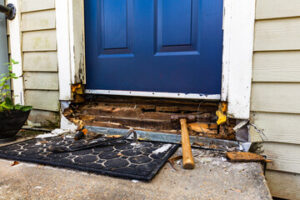Once you’ve compiled a raw list of keywords, the next step is to determine their search volume. But it’s important to remember that search volumes aren’t always a good indicator of whether or not a keyword is worth targeting.

Users searching singular keywords often have a specific intent in mind, such as researching a brand or product. So, you’ll want to understand the user intent behind each of your keywords. Get in touch with Helena SEO Pro’s for professional support.
When you type a query into a search engine, it immediately starts looking for web pages that match those words. It then displays a list of the best matches, usually on the first page. The processing required to do this is huge, as search engines typically index billions of pages. They then need to decide, out of all of those, which ones should be displayed first. To do this, they use a ranking algorithm that has many different algorithms and processes working together.
The first major search engine to gain popularity on the internet was the Yahoo! Directory, launched in January 1994. Its search function operated on the full-text copies of Web pages that it indexed rather than on the cryptic URLs that were used at the time. Its success prompted a number of competitors to enter the market, including Excite, Infoseek, Northern Light and AltaVista.
Each search engine’s process is complex and can vary depending on the type of content it indexes. For example, a database-driven search engine like Google will look at the contents of each web page and parse them to separate out the links from the text content. It will then create an inverted index of all the links found and their corresponding keywords, which will be used to find the relevant pages when a search is performed.
The more information that is provided about a web page when it is indexed, the better its chances are of appearing in the top results for a keyword search. This is especially true if the content thoroughly answers the question that the user has entered into the search box. For this reason, it’s important to only target keywords that are relevant and to write informative content.
Wildcards
Many search engines use special characters that you can add to your query to help your results. These are called search operators and they can make a huge difference in the quality of your results. Some of these are simple, like a question mark (?) that searches for variant spellings of a word. Other search operators are more complex, such as the asterisk (*) that searches for any word or phrase.
Another common search operator is the tilde () that acts as a fuzziness or proximity search when used after a root word in Standard or Lexis Nexis search syntax. This can turn up synonyms, alternate spellings and homonyms that may be overlooked when searching for an exact match.
A * wildcard can also be useful in searches that require a certain number of words to be present. For example, if you want to find all search results for the words “happy scene” that end with “to you,” you might search Google for “happy scene * to you.”
You can also narrow your search results by placing quotation marks around keywords. This will ensure that the search engine looks for only the terms you are focusing on in the exact order you want them. You can also increase or decrease the importance of a keyword in your results by using the caret () symbol followed by a number. For example, a search for migration7 geese would return results containing the word migration that are seven times more relevant than those without it. This is useful if you have an approximate idea of what you want to find, but are not sure of the exact term.
Synonyms
When it comes to writing a readable text, using synonyms can be an effective way to avoid keyword stuffing. This is because search engines recognize that words can have the same meaning. For example, hard and difficult, couch and sofa, suitcase and luggage are all synonyms. When you use synonyms in your text, it will ensure that your content is more readable and that it covers a wider range of topics. It also helps to keep readers engaged. This can be especially important if you are targeting long-tail keywords, as these keywords often have less competition.
Another benefit of using synonyms is that it can help you find new search terms to target. For example, if you are targeting the keyword “dog,” you can use synonyms like hound, canine, or puppy to get more visibility. This is because it’s more likely that people will search for these words if they are looking for specific information about dogs.
However, it’s important to remember that synonyms are not a substitute for keyword research. Instead, they are a tool that can be used to supplement your keyword research and improve your search engine optimization. It’s best to use them sparingly and carefully, as they can cause a negative impact on your search rankings if overused.
Google’s Hummingbird update has gone a long way in making its algorithm more human, by moving well beyond word matching to understanding the context of searches. This is one of the reasons why it’s important to think about how your audience might talk about your keyword when brainstorming synonyms and LSI keywords. It’s not about tricking the algorithm; it’s about providing results that make sense to users.
Antonyms
In some cases, antonyms are more effective than synonyms in conveying the intended meaning. For example, “slow cooking recipes” may be more effective in capturing a specific search intent than the more general “fast cooking recipes.” However, it is important to ensure that keyword searches include both synonyms and antonyms to avoid keyword cannibalization. Keyword cannibalization occurs when pages on a website target the same keywords, leading to confusion for search engines and dilution of search engine rankings. To reduce the likelihood of this occurring, it is recommended to maintain a document that includes all potential keywords and their variations, including antonyms and hyponyms.
Incorporating antonyms into SEO content improves its relevance, broadening its semantic reach and attracting a more diverse audience. For example, using a thesaurus to find antonyms for the keyword “fast” can help ensure that search engines recognize a variety of different meanings when indexing content. This approach can also be useful in avoiding duplicate content, as search engines will rank pages more favorably when they appear in the context of a relevant query.
Hyponyms offer a greater degree of specificity than both synonyms and antonyms, drawing finer semantic lines. For example, a thesaurus will typically list synonyms for the word “birds” and antonyms for the word “penguins.” However, a hyponym will specifically refer to one of these birds and offer further clarification.
The most powerful antonym research tools go far beyond the basic thesauruses and offer sophisticated language suggestions based on the context of a specific query. This functionality makes it easy to craft content that captures multiple perspectives on a topic without diluting the primary keywords. This level of specificity enables websites to rank more highly for their target keywords, helping them achieve long-term success in the competitive online marketplace.
Keyword Grouping
Keyword grouping is the process of organizing keywords into groups that share a similar search intent. This helps marketers create relevant content and improves SEO and PPC performance. It can be done manually or using an automated tool. Regardless of the method used, it is important to review and update keyword groups periodically based on changes in search behavior or industry trends.
Manual keyword grouping can be a time-consuming process, especially when dealing with large lists of keywords. This method requires you to break up a set of keywords into distinct categories and identify their meaning. It can also be difficult to determine if the keywords are actually related to each other.
Using an automated keyword grouping tool allows you to save time and effort by creating a set of keyword groups that are both logical and meaningful. However, it is important to choose the right tool for your needs and budget. There are many different tools available, and each one offers a unique set of features and benefits.
For example, the free tool from SEO Scout uses Natural Language Processing (NLP) to analyze a keyword list and automatically groups them into groups based on their search results. This helps you avoid over-clustering and missing out on valuable opportunities. The NLP process also helps you identify misspellings, which are sometimes overlooked in the manual grouping process.
Keyword grouping is an essential part of effective SEO and PPC campaigns. It can help you create more relevant and effective content, optimize your website for search engines, and drive more traffic and conversions. It can even help you identify and target new audiences. Keyword grouping is critical for both SEO and PPC, and it can make a huge difference in your ROI.





